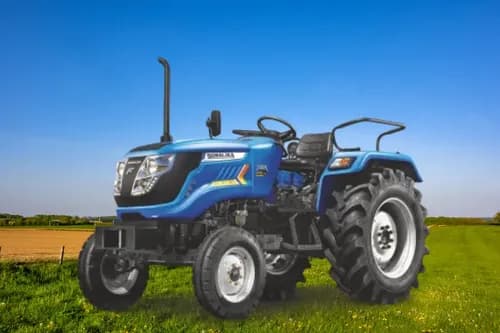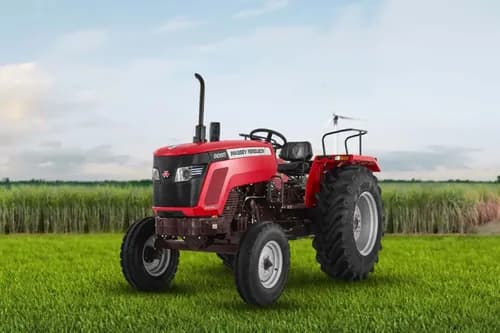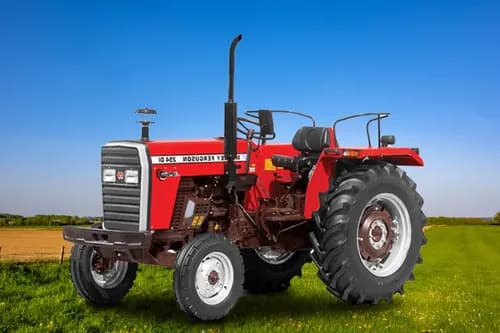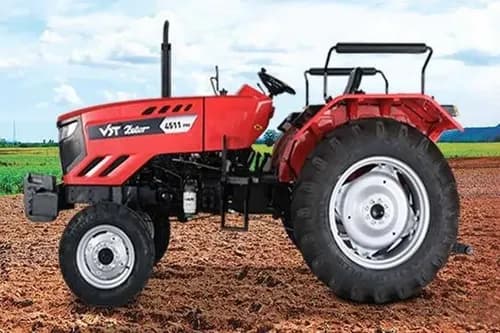Ad
Ad
Ad
Revolutionizing Indian Agriculture: The Impact of Introducing 5G Internet on Farming Practices and Schemes for Development
Agriculture is a vital sector of the economy that involves cultivating crops, fruits, vegetables, flowers, and raising livestock for food and other purposes. In India, agriculture plays a crucial role in sustaining the livelihoods of its people, especially those living in rural areas. With over 70% of rural households depending on agriculture, it serves as a significant source of income and employment for a vast section of the population.

Notably, the agriculture sector in India contributes significantly to the country's GDP, accounting for around 17% of the nation's total output. Furthermore, as per recent reports, the share of agriculture in GDP increased to 19.9% in 2020-21, demonstrating the sector's continued growth and importance.
One of the remarkable features of the agriculture sector in India is its resilience during difficult times. Amid the COVID-19 pandemic, when most sectors suffered severe setbacks, agriculture proved to be an exception. Despite the challenges posed by the pandemic, the sector recorded a growth rate of 3.6% in 2020-21 and 3.9% in 2021-22, demonstrating its ability to withstand even the toughest of circumstances.
What is 5G technology?
5G technology is the latest update in mobile network technology, and it is the fifth generation of mobile networks. It is designed to replace or augment LTE (Long Term Evolution) connections, and it offers many benefits such as high reliability, spectrum bands, and speed. It has a very low latency rate, which means that data is transmitted quickly and efficiently, and it has a massive capacity, which means that it can handle a large number of devices simultaneously.
One of the key benefits of 5G technology is that it provides a download speed of 1Gbps, which is 100 times faster than the existing data speed. This means that users can download large files and stream high-quality videos much faster than before.
5G technology works on three band spectrums: low band, mid-band, and high band spectrum. The low band spectrum provides large area coverage and has a speed limit of 100 Mbps. This means that it is suitable for areas where coverage is more important than speed.
The mid-band spectrum offers higher speeds than the low band, but the area covered has some limitations. This makes it suitable for urban areas where coverage and speed are both important.
The high band spectrum offers the highest speed of all three but has extremely limited coverage. This makes it suitable for small areas such as stadiums and conference halls where high-speed internet is required.
In addition to speed and coverage, 5G technology also increases energy efficiency and provides better network connections. This means that devices can operate for longer periods of time without requiring a recharge, and users can enjoy a more reliable and stable internet connection.
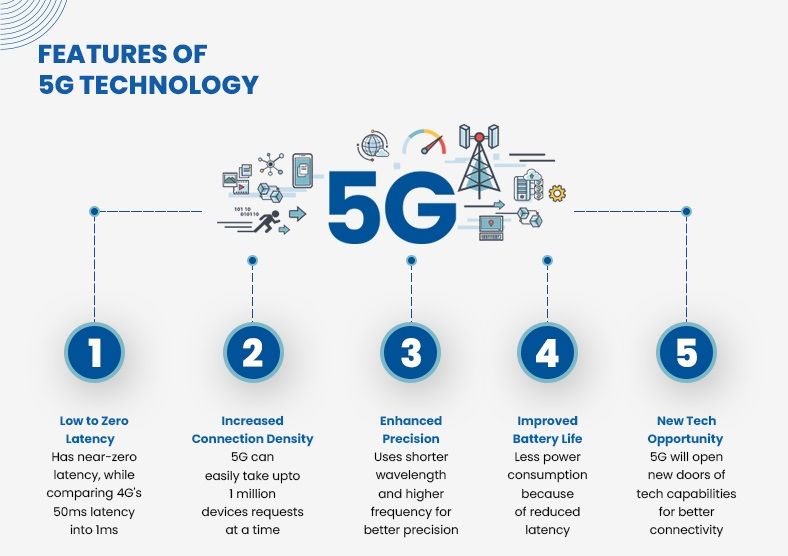
What are the Advantages of 5G technology?
-
5G technology offers many advantages over previous generations of mobile networks. It improves accessibility to mobile banking, healthcare, and telemedicine services, which means that people in remote areas can access these services more easily.
-
5G technology can also help policymakers to empower citizens and transform cities into smart cities. It can be used for a variety of applications, such as the Internet of Things, smart agriculture, energy monitoring, and industrial automation, which can lead to economic betterment.
-
In agriculture, 5G technology can be used for smart farming, where sensors and other devices are used to monitor soil conditions, crop growth, and other factors that can affect yield. This can help farmers to optimize their crop yields and reduce waste.
-
In the healthcare industry, 5G technology can support medical practitioners in performing advanced medical procedures. For example, it can be used for remote surgeries, where a surgeon can operate on a patient in a different location using robotic devices.
-
Another advantage of 5G technology is that it will help in the digital growth of the country, which can lead to employment generation. With faster and more reliable internet connections, businesses can operate more efficiently and reach a wider audience.
Finally, 5G technology can also be used for entertainment and multimedia applications. With higher speeds and lower latency rates, users can enjoy high-quality video and audio streaming, online gaming, and other multimedia applications.
Impact of 5G Technology in Indian Agriculture
The development of 5G internet can bring significant changes to the Indian agriculture sector. Some of the changes are:
-
Real-time monitoring: With the help of 4G and 5G, farmers can monitor their crops and livestock in real-time. This will help them to take necessary actions quickly in case of any problem or emergency.
-
Precision agriculture: 4G and 5G can enable farmers to use precision agriculture techniques to optimize their yield. Precision agriculture involves using data analytics, remote sensing, and other technologies to make precise decisions about planting, fertilization, irrigation, and harvesting.
-
Improved access to information: With 4G and 5G, farmers will have access to a wealth of information, including weather forecasts, market prices, and the latest farming techniques. This can help them make informed decisions about their crops and improve their profitability.
-
Remote monitoring: With the help of 4G and 5G, farmers can remotely monitor their crops and livestock from anywhere. This can help them to reduce labor costs and improve their overall efficiency.
-
Smart irrigation: 4G and 5G can enable farmers to use smart irrigation techniques that optimize water usage based on the crop's needs. This can help to conserve water, which is a precious resource in many parts of India.
-
Reduced operational costs: With the help of 4G and 5G, farmers can automate many of their routine tasks, such as monitoring soil moisture and temperature, and controlling irrigation systems. This can help them to reduce their operational costs and improve their profitability.
-
Improved supply chain management: 4G and 5G can enable farmers to connect with buyers and suppliers in real-time. This can help to improve the efficiency of the supply chain and reduce waste.
In conclusion, the development of 4G and 5G internet can bring significant changes to the Indian agriculture sector, helping farmers to improve their yields, reduce their operational costs, and increase their profitability.

What are some schemes for internet development in Indian Agriculture?
The Indian government has launched several schemes to promote internet development in Indian agriculture. Some of the notable schemes are:
-
Pradhan Mantri Gramin Digital Saksharta Abhiyan (PMGDISHA): This scheme aims to provide digital literacy to farmers and other rural citizens. Under this scheme, training is provided to citizens on how to access the internet, digital payment systems, and other digital services.
-
Pradhan Mantri Fasal Bima Yojana (PMFBY): This scheme provides crop insurance to farmers. The scheme is implemented using digital platforms, which allows farmers to register for the scheme and file claims online.
-
Soil Health Card Scheme: This scheme provides farmers with soil health cards, which contain information about the nutrient content of the soil. The scheme is implemented using digital platforms, which allows farmers to access their soil health cards online.
-
eNAM: This is an online platform for trading agricultural commodities. The platform allows farmers to sell their produce directly to buyers, bypassing middlemen. The platform also provides real-time price information to farmers.
-
Kisan Suvidha: This is a mobile app developed by the Indian government for farmers. The app provides farmers with information about weather, market prices, and agricultural schemes. The app also allows farmers to access their soil health cards and register for the PMFBY scheme.
Overall, these schemes aim to promote the use of digital technologies in Indian agriculture, which can improve productivity, reduce costs, and increase farmers' incomes.
What are the Problems with Indian Agriculture?
-
Instability: Indian agriculture is heavily reliant on monsoons for water supply, which can cause significant fluctuations in crop yields and income for farmers.
-
Land ownership: There is a significant inequality in land ownership in India, with many holdings being small and economically unviable. This can lead to underutilization of land and low agricultural productivity.
-
Subdivision and fragmentation of holdings: Another issue related to land ownership is the subdivision and fragmentation of land holdings, which can further reduce productivity and make it difficult for farmers to access credit and other resources.
-
Condition of agricultural laborers: Many agricultural laborers in India face poor working conditions, low wages, and a lack of job security. There is also a surplus of labor in the agricultural sector, which can lead to disguised unemployment.
-
Inadequate use of manures and fertilizer and use of poor quality seeds: The inefficient use of inputs like manures and fertilizers, as well as the use of low-quality seeds, can further reduce agricultural productivity.
-
Inadequate use of efficient farm equipment: The use of outdated and inefficient farm equipment can make it more difficult for farmers to carry out their work efficiently.
-
Agricultural credit and indebtedness of farmers: Many farmers in India struggle to access credit, and those who do often face high levels of indebtedness. This can make it difficult for them to invest in their farms and improve productivity.
The Role of 5G technology in Agriculture
- Technological revolution: With the development of 5G technology and digital services, there is an opportunity for agricultural revolution as merging technology with conventional farming techniques will bring change in agriculture fields.

-
Agriculture sensors: Sensors like optical sensors, electrochemical sensors, and GPS sensors help in mapping farms and crops, preserve resources, and provide information at a minute level.
-
Smart irrigation: 5G technology will help in reading soil moisture content, pattern, and salinity to help farmers understand the amount of water needed and when to irrigate.
-
AI-powered machines: Farmers can connect machines through 5G technology to get data on the machine's position and function even when they are not present in the field.
-
Livestock management: Geo locations can help farmers monitor the health and activities of their cattle, including data on food intake and fertility. 5G technology can work through Wi-Fi and Bluetooth, especially in large farms.
-
5G-enabled applications: Farmers can use 5G-enabled applications to get information on weather conditions, rainfall, agriculture market, prices of seeds and pesticides, and other essential details by connecting their smartphones with 5G technology.
-
Data aggregation: 5G technology has strong potential for data collection, and it can help corporates build private 5G networks from micro-monitored crop management systems that provide real-time information about needs and deficiencies.
-
Drone operations: Drones are less costly than tractors and give more useful information about crops, and 5G technology will increase their efficiency to collect HD images. High speed will help in the functioning of AI drones that can also be used for crop sprayer and weed sprayer.
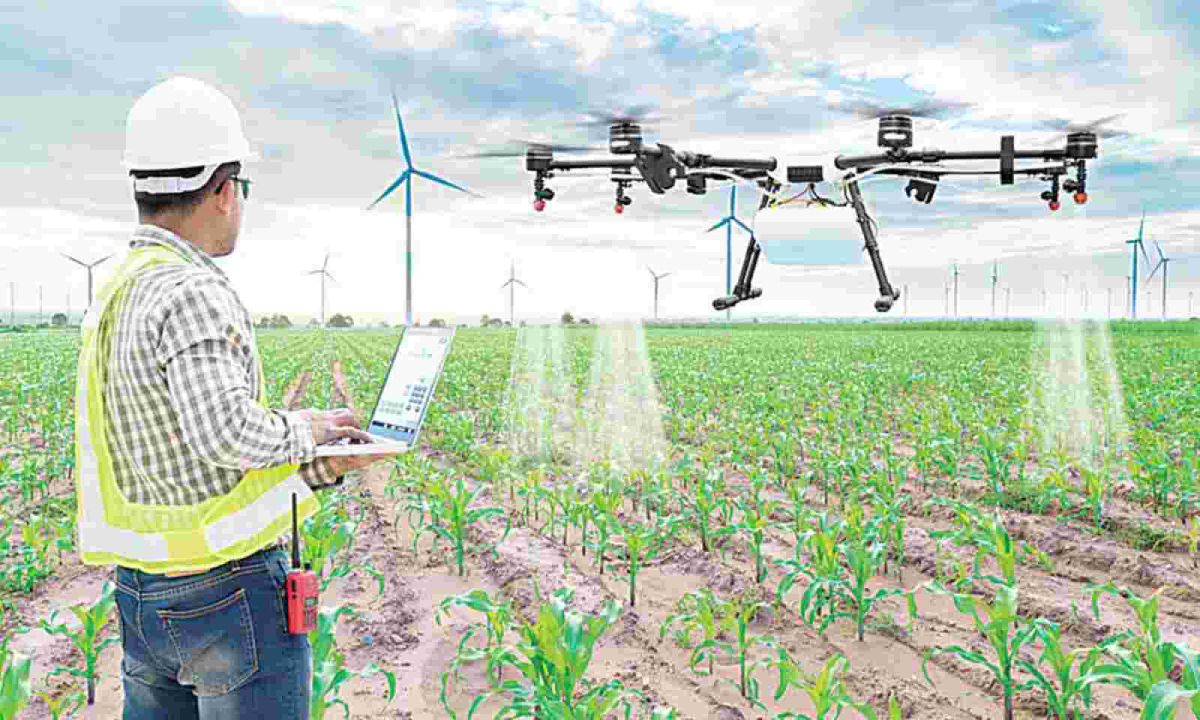
-
IoT-enabled farms: IoT sensors can help growers minimize operation costs, and it is targeted to install 12 million agricultural sensors globally by 2023.
-
Precision farming: 5G technology will help provide accurate information on a particular patch of land, allowing farmers to act accordingly instead of treating the whole land, which causes more damage.
-
Connected cows and calving: With the help of IoT and 5G technology, farmers can use sensors to monitor calving, alert them when a calf is born, and ensure the safety of the newborn calf.
-
Reduce water consumption: The Vodafone worldwide IoT Network grid has already reduced 40% irrigation, and such functions will improve further with the development of 5G technology.
Challenges of 5G technology
- Inadequate technological infrastructure in many parts of the country may make it difficult to implement 5G technology effectively.
- The replacement of old equipment that doesn't support 5G may lead to e-waste generation.
- Data protection issues may arise due to the high volume of data transmitted through 5G networks.
- The large number of users and the rapid increase in broadband consumption may lead to network congestion.
- The infrastructure-intensive development required for 5G technology will be expensive and time-consuming.
- Telecom firms may face excessive financial stress due to the high costs of deploying 5G networks.
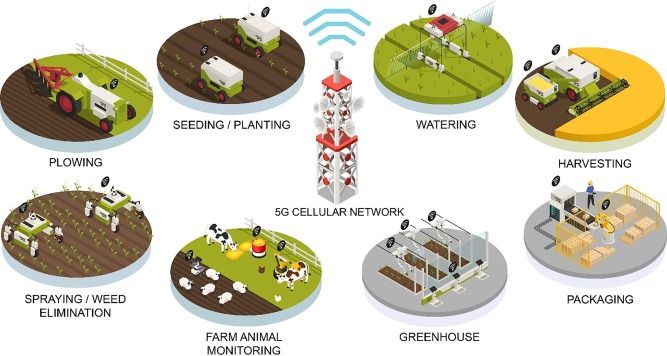
What are the Solutions to the Above Challenges?
- 5G technology can operate on a low band spectrum, which can be useful in rural regions where technological advancement is incompetent.
- The government can support the adoption of 5G technology by regulating the prices consumers pay for it and managing the spectrum design.
- The government can also assist telecom firms in establishing networks that are accessible and sustainable.
Understanding the Evolution of Agriculture in India
-
The evolution of agriculture can be traced back to around 11,500 years ago during the Neolithic period, when people began to learn how to grow cereal and root crops. This led to the development of settled farming communities that relied on agriculture for their livelihoods.
-
Around 10,000 years ago, humans started to domesticate animals such as goats, sheep, and chickens, which played a vital role in agricultural production.
-
In the 15th and 16th centuries, a period of discovery led to the introduction of new varieties of plants and agricultural products. Coffee, tea, and indigo were introduced from Asia, while potatoes, tomatoes, corn, beans, peanuts, and tobacco were introduced from the Americas.
-
During the 1950s and 60s, scientists developed new strains of high-yield wheat and rice, which were introduced in Mexico and parts of Asia.
-
India has a long history of agriculture, dating back to the Indus Valley Civilization. The first evidence of cotton cultivation was found in India, and rice and barley were also produced. During the Middle Ages, irrigation channels and land and water management systems were developed to ensure uniform growth. However, there was some stagnation during the modern period.
-
After India gained independence, the country invested equally in all sectors during the first five-year plan to determine its strengths. It was concluded that agriculture was India's strength and would grow on its own, but the major increase in production happened due to an increase in land areas. However, growth came down when India faced massive drought and famine, and all the money was invested in the second five-year industrial plan and lost in war. India's economy crumbled, and the country was on the verge of a hunger crisis in 1964.
-
Britain did not support India, and Russia was unable to provide assistance. The United States was questioned due to the nonalignment movement, but later provided low-quality PL480.
-
India needed food security, and the Green Revolution was introduced in 1966 with a focus on agriculture. This provided the idea of sustainability, and today India is the largest producer of wheat, edible oil, potato, spices, and rubber. Further revolutions such as the Pink Revolution, Brown Revolution, and Golden Revolution helped keep agricultural development in check.
Conclusion
The rollout of 5G technology is not an overnight process, and it may take some time before it is accessible in remote areas. However, with the advent of new technology, it is likely that the agricultural industry will undergo significant changes. Automation will undoubtedly reduce the need for manual labor, but this may not necessarily be a negative thing. Instead, farmers can focus their efforts on more critical aspects of farming, such as marketing and planning. With the increased efficiency that 5G technology brings, farmers will have access to more data than ever before. This data will enable them to make more informed decisions about their crops, livestock, and resources, ultimately leading to increased productivity and profitability. While there may be some challenges in the implementation of 5G technology, its potential benefits are vast and will undoubtedly transform the agricultural industry.
Features & Articles
Top 10 Kubota Tractors in India: Prices & Specs
Kubota tractors revolutionize Indian farming with Japanese engineering, reliability, and versatility, empowering farmers for sustainable agricultural growth....
26-Apr-24 09:30 AM
Read Full NewsTips for Selling Your Commercial Vehicles
In this article, we will share ideas for selling an old commercial vehicle so that you get a good price for your vehicle....
25-Apr-24 11:56 AM
Read Full NewsSolis 4215 E: Redefining Farming for Indian Farmers with Innovation & Affordability
Solis 4215 E: A 43 HP tractor revolutionizing Indian farming with powerful performance, comfort, and affordability, enhancing productivity and farmer prosperity....
25-Apr-24 06:50 AM
Read Full NewsGovernment Initiates Early Implementation Plans for BS-VII and CAFE-III Emission Norms
The government will impose stringent BS-VII and Corporate Average Fuel Efficiency-III (CAFE-III) criteria to update emission standards....
22-Apr-24 02:17 PM
Read Full NewsTips To Improve Mileage Of Tata Intra V30 Pickup Truck
In this article, we have listed some practical tips and driving techniques for drivers to enhance the fuel efficiency of the Tata Intra V30....
20-Apr-24 11:49 AM
Read Full NewsTop 5 Reasons to Buy a Tata Ace HT Plus in India
This article lists the top 5 reasons to buy a Tata Ace HT Plus in India for your business....
17-Apr-24 09:44 AM
Read Full NewsAd
Ad
Registered Office Address
Delente Technologies Pvt. Ltd.
M3M Cosmopolitan, 12th Cosmopolitan,
Golf Course Ext Rd, Sector 66, Gurugram, Haryana
pincode - 122002
Join CMV360
Receive pricing updates, buying tips & more!
Follow Us
COMMERCIAL VEHICLE BUYING BECOMES EASY AT CMV360
CMV360 - is a leading commercial vehicle marketplace. We helps consumers to Buy, Finance, Insure and Service their commercial vehicles.
We bring great transparency on pricing, information and comparison of tractors, trucks, buses and three wheelers.















